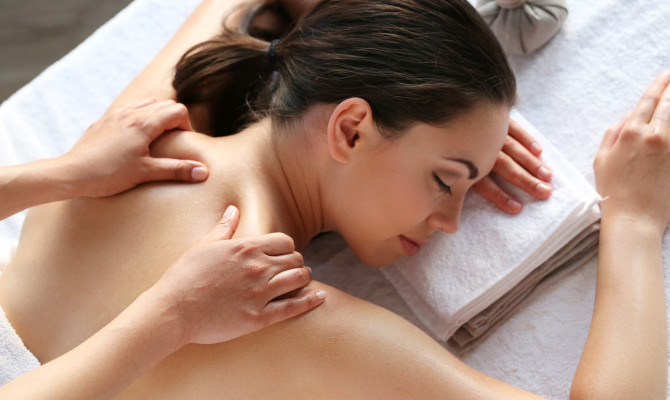Labiaplasty: Indications, Procedure & Side Effects

- Labiaplasty
- 19 Oct 2023
Introduction
Labiaplasty
A surgery called labiaplasty is used to change the labia minora or majora’s size or form, addressing both aesthetic and potential functional concerns. This elective surgery has gained attention recently, sparking medical, ethical, and societal debates. This article will explore the world of labiaplasty, why it is performed, procedure, risks, and recovery. It is crucial to remember that choosing to have this procedure is a highly personalized decision, and people may be motivated by a variety of factors. This article will guide you by providing insights about this procedure and how it affects your overall well-being.

Purpose
What is the Purpose of a Labiaplasty?
- Cosmetic concerns
- Functional issues
- Psychological impact
It is a personal choice, and people may consider it for various reasons. It may be suitable for those who experience:
Cosmetic dissatisfaction
- People who are dissatisfied with the appearance of their labia and seek to alter their size or shape for cosmetic reasons.
Functional discomfort
- Those who experience pain or discomfort because of the size or form of their labia during physical activities like exercise or sexual contact.
Psychological impact
- Individuals whose emotional well-being and self-esteem are affected by concerns about the appearance of their genitalia.
- Some see this procedure as enhancing confidence and addressing emotional well-being.
- It includes concerns about body image and self-esteem, which can drive people to seek the process. 1 Purpose | Researched based study from National Institutes of Health , 2 Purpose | Researched based study from National Institutes of Health
Instructions
What not to do Before Labiaplasty?
- Smoking
- Alcohol consumption
- Dehydration
- Unnecessary hair removal
- Exercise
To guarantee a smooth and successful treatment, it is imperative to adhere to certain criteria before beginning.
Smoking and nicotine use
- Smoking and using nicotine-containing products can impair blood flow and increase the risk of complications during and after the surgery.
- Most surgeons recommend quitting smoking for a certain period.
Excessive alcohol consumption
- Alcohol can also affect blood clotting and increase the risk of complications.
- Typically, surgeons are counselled against consuming excessive amounts of alcohol in the days preceding surgery.
Dehydration
- Staying well-hydrated is essential for overall health and recovery. Avoid excessive caffeine or alcohol intake, as they can contribute to dehydration.
Unnecessary hair removal
- Avoid unnecessary hair removal procedures in the genital area close to the surgery date.
- If hair removal is required, your surgeon will provide specific instructions.
Over-exertion and exercise
- Physically demanding activities might slow the healing process down and increase the chance of bleeding.
Procedure
Step-by-Step Procedure for Labiaplasty
Consultation
- A qualified healthcare expert is consulted before the procedure.
- This is an opportunity for the patient to discuss their concerns and expectations and understand the potential outcomes of the procedure.
Preoperative assessment
- The surgeon conducts a thyroid examination to assess the patient’s anatomy, overall health, and suitability for the procedure.
- It is possible that the preoperative guidelines include avoiding particular medications or activities.
Anesthesia
- Normally, local anesthesia is used, either with or without sedation.
- Depending on the scope of the surgery and the patient’s preferences, general anesthesia may be a possibility.
Surgical methods
Labiaplasty can be performed using a variety of surgical techniques; common ones include:
- Trimming technique: Removing excess tissue along the ages of the labia.
- Wedge technique: Removing a V-shaped wedge of tissue from the labia.
- Combination technique: A combination of trimming and wedge techniques.
Tissue reshaping
- According to the predetermined plan, the surgeon carefully receives the labia minora or majora. The goal is to achieve the desired cosmetic or functional outcome while maintaining symmetry and preserving sensitivity.
Closure
- After reshaping, the surgeon sutures the incisions with dissolvable stitches. The choice of suturing technique can vary based on the surgeon’s preference and the specific case.
Postoperative care
- Patients receive postoperative care instructions, including recommendations for hygiene, pain management, and restrictions on specific activities,
Follow up
- To track the healing process and answer any worries or inquiries the patient may have, follow-up appointments are planned. 3 Procedure| Researched based study from National Institutes of Health , 4 Procedure| Researched based study from ScienceDirect
Risks
Labiaplasty Surgery Side Effects
- Infection
- Bleeding
- Scarring
- Changes in sensation
- Asymmetry
- Pain
- Reactions to anesthesia
- Unsatisfactory cosmetic outcome
- Psychological effects
The disadvantages of labiaplasty procedure are as listed below:
Infection
- There is a chance of infection at the location of the incision, as there is with any surgical surgery.
- Proper postoperative care and hygiene are essential to minimize this risk.
Bleeding
- One possible side effect of surgery is excessive bleeding during or after.
- During the procedure, surgeons take efforts to reduce bleeding.
Scarring
- It could happen close to the incision. Although surgeons work to reduce apparent scars, recovery times might differ from person to person.
Changes in sensation
- There could be changes in sensitivity or numbness in the genital region.
- While most people do not experience significant changes, there is a risk of temporary or permanent sensory changes.
Asymmetry
- Perfect symmetry can be difficult to achieve, and any outcome is possible. Revision surgery may be considered if significant asymmetry occurs.
Pain and discomfort
- Although it is usual to have pain and discomfort following surgery, these side effects are typically transient and can be controlled with medicine.
Adverse reactions to anesthesia
- Reactions to anesthesia, although rare, can pose risks. Thorough preoperative assessments help minimize these.
Unsatisfactory aesthetic outcome
- The patient might not be happy with the cosmetic outcomes despite the surgeon’s best efforts.
- Clear communication during the consultation is crucial to manage expectations.
Psychological impact
- Some people may experience emotional or psychological distress postoperatively.
- Counseling and support may be necessary for those dealing with unexpected emotional responses. 3Risks| Researched based study from National Institutes of Health
Recovery
Recovery & Postoperative Care for Labiaplasty
Immediate postoperative period
- Patients are observed in a recovery area following surgery. Once stable, they are usually allowed to return home the same day.
Pain management
- After the surgery, pain and discomfort are to be expected. Pain medication prescribed can help manage it.
Ice packs and swelling
- In the first few days following surgery, applying ice packs to the operative region might help minimize swelling.
- This is often recommended in short intervals.
Rest and Limited activity
- During the early phase of rehabilitation, patients are recommended to relax and refrain from vigorous activities like exercise and sexual activity. This helps minimize stress on the surgical area.
Hygiene
- Proper hygiene is crucial. Usually, patients are instructed to keep the surgery area tidy and dry.
- Gently cleaning the area with a mild, fragrance-free soap and packing it dry is recommended.
Loose clothing
- Wearing loose-fitting clothing during recovery helps minimize friction and irritation in the surgical area.
Avoiding tampons
- Patients are often advised to avoid tampons and use sanitary pads during the initial recovery phase.
Resuming normal activities
- Gradual resumption of normal activities is usually allowed as the healing progresses.
- However, patients should follow the specific guidelines provided by their surgeon.
Scar care
- If dissolvable stitches were used, stitch removal may not be needed. Scar care instructions such as avoiding Sun exposure to the surgical area may be given to minimize scarring. 4 Recovery| Researched based study from ScienceDirect
How long is bed rest after Labiaplasty?
- The amount of the treatment and the surgeon’s exact postoperative instructions influence how long bed rest is advised following labiaplasty.
- Following surgery, patients could require a few hours of rest in a recovery area. Patients are typically advised to rest during the first few days at home.
Alternatives
Alternatives to Labiaplasty
There are non-surgical alternatives and considerations for people seeking to address concerns related to the appearance of function of the labia.
Topical treatments
- Some people explore non-surgical options such as tropical treatments or creams to address specific concerns.
- These therapies’ efficacy can vary, so it’s important to speak with a healthcare practitioner before using any of them.
Physical therapy for the pelvic floor
- Physical treatment for the pelvic floor may be suggested for functional issues like discomfort.
- Physical therapists with expertise in pelvic health can offer strategies and exercises to address certain problems without surgery.
Counseling or therapy
- Psychological concerns about body image or self-esteem may benefit from counseling or therapy.
- Mental health specialists can offer guidance and techniques to enhance one’s view of oneself and general wellbeing.
Wearing comfortable cloth
- Choosing loose-fitting and comfortable clothing can help elevate irritation and discomfort.
- This is a simple lifestyle adjustment that may contribute to overall comfort. 5 Alternatives| Researched based study from National Institutes of Health , 6 Alternatives| Researched based study from National Institutes of Health
Any feedback on this article?
 This Articles content was accurate
This Articles content was accurate Very Informative Article
Very Informative Article I have a question or a comment
I have a question or a comment
 This article contains inaccurate content
This article contains inaccurate content This article was not helpful
This article was not helpful I have a question or a comment
I have a question or a comment
We appreciate your helpful feedback!
Checkout our social pages
References
-
National Institutes of Health
Purpose
-
National Institutes of Health
Purpose
-
National Institutes of Health
Procedure | Risks
-
ScienceDirect
Procedure | Recovery
-
National Institutes of Health
Alternatives
-
National Institutes of Health
Alternatives

































